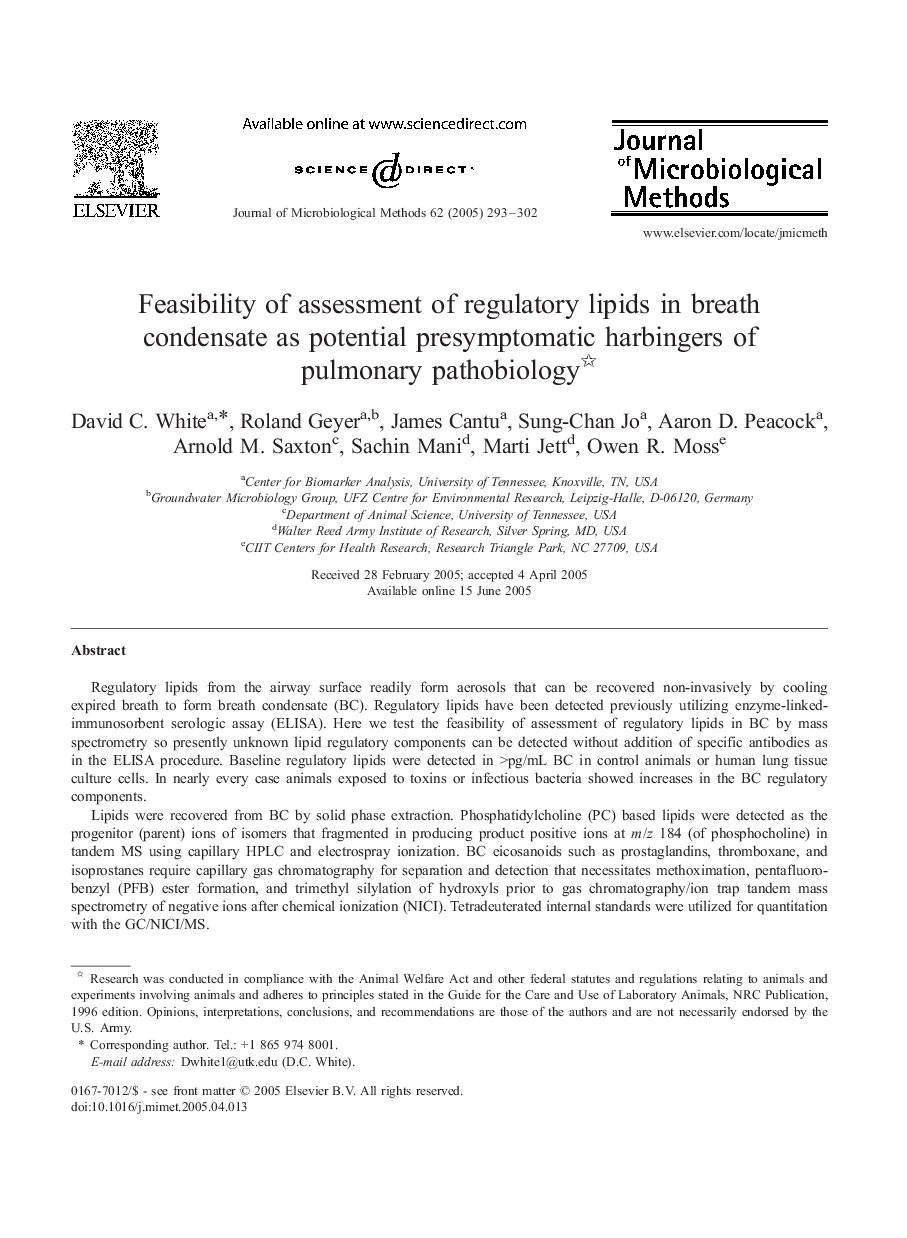| Article ID | Journal | Published Year | Pages | File Type |
|---|---|---|---|---|
| 10890729 | Journal of Microbiological Methods | 2005 | 10 Pages |
Abstract
Changes in concentrations of lipids and eicosanoids were observed in piglets, and rats exposed to aerosolized 100 μg/kg lipopolysaccharide (LPS), or 50 μg/kg and 150 μg/kg aerosolized Staphylococcal enterotoxin B (SEB) in BC as well as in human THP-1 cell culture cell supernatants and bronchoalveolar lavage (BAL) samples in rats. Responses of the molecular species of phosphatidylcholines (PCs), platelet activating factors (PAFs) and specific eicosanoids correlated to the toxin and bacterial infections suggesting that patterns of differential responses could be detected with further experimentation. Initial targets included prostaglandins (PGE2, PGF2α), thromboxane (TXB2), and prostacyclin (as 6-Keto PGF1α) that show differential responses to inflammation, the leukotriene (LTB4) and PGD2 for allergic responses, isoprostanes (8-iso-PGF2α) for free radical oxidative stress responses, and HETEs for differential lipoxygenase activities. PAFs and lysoPAFs have been shown to increase with inflammation and in the feasibility experiments reported here. Preliminary studies show pulmonary responses of piglets to intrathecal exposure of toxicants (LPS and SEB) or infections with Actinobacillus pleuropneumoniae induce increased levels of lipids and two eicosanoids with the suggestion that differential patterns might be detected with expanded testing. Preliminary experience indicates numerous other eicosanoids were available for assay in BC. This suggests an important potential application of BC to observe a wide array of factors to establish comprehensive profiles for physiological and pathophysiological states. Ultimately this technique could be used as a non-invasive possibly presymptomatic assessment of pulmonary pathobiology.
Related Topics
Life Sciences
Biochemistry, Genetics and Molecular Biology
Biotechnology
Authors
David C. White, Roland Geyer, James Cantu, Sung-Chan Jo, Aaron D. Peacock, Arnold M. Saxton, Sachin Mani, Marti Jett, Owen R. Moss,
